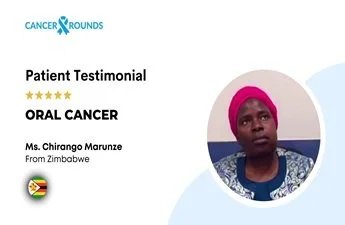Mouth Cancer
What is Mouth Cancer?
Understanding Mouth Cancer: A Medical Perspective
Mouth cancer develops when abnormal cells in the oral cavity grow uncontrollably, forming malignant tumors. What causes mouth cancer varies, but the most common type is squamous cell carcinoma, which originates in the thin, flat epithelial cells lining the mouth’s surfaces. Understanding what oral cancer is and recognising the first signs of mouth cancer are crucial for early intervention.
The oral cavity encompasses several anatomical structures where mouth cancer symptoms may appear, including the lips, buccal mucosa (inner cheek lining where early stage cheek mouth cancer might develop), upper and lower alveolar ridges and gingiva (gums), floor of the mouth, hard palate, and anterior two-thirds of the tongue. While some may wonder “is mouth cancer curable?”, the answer largely depends on detecting it at the mouth cancer starting stage before it advances through different oral cancer stages.
Early detection significantly impacts treatment outcomes and survival rates. Unfortunately, delayed diagnosis often leads to more advanced disease states that require more aggressive treatment and have poorer prognoses. What might appear as a cancerous mouth cyst could be an early manifestation requiring immediate attention.
Patients and healthcare providers should remain vigilant for warning signs, including:
- Persistent mouth ulcers that fail to heal within two weeks
- Red or white patches (erythroplakia or leukoplakia) on any oral surface
- Unexplained lumps or swellings in the mouth or neck
- Chronic sore throat or hoarseness
- Difficulty swallowing or persistent sensation of something caught in the throat
Any of these symptoms persisting beyond two weeks warrants prompt medical evaluation. Regular dental examinations can also play a crucial role in identifying suspicious lesions before they become symptomatic.
Oral cancer is the 13th most common cancer worldwide, with 377,713 new cases and 177,757 deaths in 2020. India bears a disproportionate burden, accounting for a third of global oral cancer cases. Most patients present at advanced stages, leading to poor prognosis, especially in regions with limited access to early detection and prevention programs.
Detailed Development and Progression of Mouth Cancer
Mouth cancer develops when DNA in the squamous cells mutate, leading to uncontrolled cell growth and tumour formation. This is influenced by the excessive usage of tobacco, alcohol consumption and Human Papillomavirus (HPV) Infection.
- Initiation: Genetic mutations occur in the lining cells, often triggered by carcinogens in tobacco, areca nut, betel quid, and alcohol. These changes disrupt normal cell behavior, setting the stage for malignancy.
- Promotion: Mutated cells multiply uncontrollably, driven by further genetic and epigenetic changes.
- Progression: The cancer invades deeper tissues and may spread to lymph nodes or distant organs. Tumor thickness and depth of invasion (DOI) are critical in predicting nodal involvement and survival.
Stages of Mouth Cancer
The progression of mouth cancer is staged using the TNM system, which considers tumour size, node involvement, and metastasis:
- Stage 0 (Carcinoma in situ): Abnormal cells confined to the surface.
- Stage I: Tumor less than or equal to 2 cm, no nodal involvement.
- Stage II: Tumor between 2 and 4 cm, no nodal involvement.
- Stage III: Tumor greater than 4 cm or any size with a single ipsilateral lymph node less than or equal to 3 cm.
- Stage IV: Tumor invades adjacent structures or has multiple or large lymph node involvement or distant metastasis.
Depth of invasion (DOI) is now a key factor in staging: it is measured from the basement membrane of adjacent normal mucosa to the deepest point of tumor invasion.
Structural and Functional Impact
Structural Changes
- Mouth cancer attacks the body’s structure. Tumors push into soft tissues, bone, and nerves, changing how the mouth looks and works. Sometimes surgeons must remove parts of the jaw, tongue, or palate to save a patient’s life, dramatically altering their appearance.
- Cancerous growths can block normal spaces in the mouth and distort its shape. The cancer often spreads to lymph nodes in the neck, causing visible swelling that pushes against surrounding areas.
- After tumor removal, patients may need reconstructive surgery to rebuild what was lost and help restore their appearance.
Functional Losses
- The disease strikes at basic functions people take for granted. Chewing, swallowing, speaking, and even facial expressions become challenging or impossible.
- When tumors invade the tongue or lips, speech suffers. Words become slurred or difficult to form.
- Swallowing turns painful or difficult as cancer blocks the normal path of food and liquids. This struggle to eat leads many patients to lose weight and strength when they need it most.
- Everyday actions like chewing food properly become battles, forcing diet changes that can leave patients nutritionally depleted.
- Cancer and its treatment can damage nerves, leaving parts of the mouth numb or in pain. Many patients lose their sense of taste, making meals joyless.
- These changes hit hard at daily life. Simple pleasures like enjoying a meal with friends or clearly speaking with loved ones become complicated challenges requiring therapy and rehabilitation.
Types of Mouth Cancer
Most mouth cancers are squamous cell carcinomas. Other rare types include verrucous carcinoma, minor salivary gland tumors, and melanomas. The oral cavity is divided into subsites for diagnosis and treatment planning: lips, buccal mucosa, alveolus, hard palate, floor of mouth, and tongue.
Squamous Cell Carcinoma (SCC):
- This is the most common type, accounting for over 90% of oral cancers.
- It originates in the squamous cells lining the oral cavity.
- SCC can occur in various areas of the mouth, including the tongue, lips, gums, and floor of the mouth.
- Subtypes are classified by differentiation (well, moderately, poorly differentiated).
Verrucous Carcinoma:
- A slow-growing variant of squamous cell carcinoma.
- It often appears as a white, wart-like growth.
- Typically associated with smokeless tobacco use.
- Has a lower risk of metastasis compared to typical SCC.
Minor Salivary Gland Tumors:
- These tumors arise from the minor salivary glands scattered throughout the oral cavity.
- Types include adenoid cystic carcinoma, mucoepidermoid carcinoma, and others.
- Location and specific histology influence treatment and prognosis.
Melanoma:
- A less common but aggressive type of oral cancer.
- Originates from melanocytes (pigment-producing cells) in the oral mucosa.
- Often presents as a dark, pigmented lesion.
- Requires aggressive treatment due to its high metastatic potential.
- Rare tumors arising from the bone, muscle, or connective tissue in the oral cavity.
- Examples include osteosarcoma (bone cancer) and fibrosarcoma (connective tissue cancer).
Causes and Risk Factors
Mouth cancer development is influenced by a combination of lifestyle, environmental, and genetic factors. Identifying these causes and risk factors is critical for prevention efforts and early intervention strategies. While some risk factors are unavoidable, such as genetics, many are modifiable, offering opportunities for reducing the risk of developing mouth cancer.
- Tobacco Use: Smoking and smokeless tobacco (chewing, gutka, khaini, betel quid) are the main drivers globally and especially in South Asia.
- Alcohol Consumption: Heavy use increases risk, especially when combined with tobacco.
- Areca Nut (Betel Quid): A major risk factor in South and Southeast Asia.
- HPV Infection: Linked to some oral cancers, though less so than in oropharyngeal cancers.
- Sun Exposure: Increases risk for lip cancer.
- Poor Oral Hygiene and Diet: Low intake of fruits/vegetables and chronic irritation may contribute.
- Demographics: More common in men, older adults, and certain ethnic groups.
Doctors For Mouth Cancer
Need More Recommendations ?
Symptoms of Mouth Cancer
- Persistent mouth ulcer or sore that does not heal
- Red or white patches inside the mouth
- Lump or thickening in the cheek, tongue, or gums
- Difficulty or pain with chewing, swallowing, or speaking
- Unexplained bleeding or numbness in the mouth
- Loose teeth or poorly fitting dentures
- Swelling in the jaw or neck
- Persistent bad breath
Early Symptoms
In the early stages, mouth cancer may not cause noticeable symptoms. However, a persistent mouth ulcer, red or white patch, or a lump in the mouth that doesn’t heal can be early warning signs.
Advanced Symptoms
As mouth cancer advances, symptoms can become more severe, including increased difficulty with swallowing and speaking, significant weight loss, and swelling in the jaw or neck due to lymph node involvement.
Brief Histopathology of Mouth Cancer
Mouth cancer, primarily classified as a head and neck cancer, predominantly involves squamous cell carcinoma, which accounts for over 90% of cases. This cancer arises from the squamous epithelial lining of the oral cavity.
Key Histopathological Features
- Squamous Cell Carcinoma (SCC): It is the most common type, and its subtypes are categorized based on keratinization levels:
- Well-differentiated SCC: Shows more than 75% keratinization.
- Moderately differentiated SCC: Exhibits 25-75% keratinization.
- Poorly differentiated SCC: Less than 25% keratinization.
- HPV-related Changes: In HPV-positive cancers, tumor suppressor genes are often inactivated by viral oncoproteins, leading to distinct histological features like basaloid or nonkeratinizing patterns.
- Other Histological Types: Less common types include verrucous carcinoma, minor salivary gland tumors (e.g., adenoid cystic carcinoma, mucoepidermoid carcinoma), and melanoma.
Diagnosis of Mouth Cancer
Diagnosing mouth cancer requires a combination of clinical examinations, imaging tests, and biopsies to confirm the presence and extent of the disease. The process includes:
Clinical Examination
- Physical Examination: Doctors inspect the mouth, gums, and neck, often using a gloved finger to feel for abnormalities inside the mouth.
- Symptom Assessment: Patients are asked about persistent symptoms such as non-healing ulcers, lumps, pain, or difficulty swallowing.
Diagnostic Tests
A. Endoscopic Examinations
- Endoscopy: A flexible or rigid tube with a camera and light is used to closely examine the oral cavity, pharynx, and larynx, aiding in the detection of abnormalities and collection of tissue samples for biopsy.
- Laryngoscopy and Pharyngoscopy: Specifically examine the larynx and pharynx for any signs of cancer.
B. Imaging Tests
- CT Scan: Provides detailed images of the mouth, throat, and nearby tissues to evaluate tumor size and check for spread to lymph nodes or other organs.
- MRI Scan: Offers clear views of soft tissues and helps assess the extent of cancer spread.
- PET Scan: Highlights areas of metabolic activity to detect cancer and is often combined with a CT scan (PET-CT).
- Ultrasound: Used to examine lymph nodes in the neck for signs of cancer.
C. Biopsy
- Tissue Sampling: A biopsy involves taking a small tissue sample from a suspicious area for microscopic examination to confirm the presence of cancer.
- Fine Needle Aspiration (FNA): Used to collect cells from swollen lymph nodes or tumors.
D. Blood Tests
- While blood tests can’t diagnose mouth cancer, they help evaluate overall health and detect issues like anemia or poor nutrition before treatment begins.
Staging and Grading
- After the cancer is confirmed, it is staged based on its size, location, and whether it has spread, which is key to determining the right treatment plan and understanding the outlook.
In summary, diagnosing mouth cancer involves a thorough approach, starting with clinical evaluations and extending through specialized procedures and imaging.
Prognosis and Survival Rates
- Prognosis varies based on cancer type, stage, HPV status, response to treatment, and overall health.
5-Year Survival Rates:
- Survival rates for localised mouth cancers are generally high.
- For cancers with regional spread, survival rates typically range.
- For cancers with distant spread, survival rates are generally lower.
HPV-positive Mouth Cancer:
- HPV-positive mouth cancers, particularly oropharyngeal cancers, often have better outcomes compared to HPV-negative cancers.
Recognising Symptoms, Treatment Pathways, and Recovery
- Seek medical care if experiencing persistent symptoms such as non-healing ulcers, lumps, pain, or difficulty swallowing. Early detection improves prognosis.
Treatment Options:
- Surgery: Tumor removal, potentially involving removal of parts of the tongue, jaw, or other oral structures.
- Radiation Therapy: High-energy beams to destroy cancer cells.
- Chemotherapy: Drugs to kill cancer cells, often combined with radiation for advanced disease.
- Targeted Therapies/Immunotherapy: Drugs targeting cancer-specific proteins or boosting the immune response.
- Most patients require a multimodal approach.
Recovery:
Recovery focuses on managing impacts on speech, swallowing, and appearance. Support includes speech therapy, nutritional guidance, counseling, and reconstructive surgery.
A diagnosis of mouth cancer often brings physical, emotional, and social challenges that require thoughtful adjustments. Prioritising self-compassion and seeking support can ease this journey. Healing is a gradual process, and leaning on your care network, both medical and personal, can illuminate pathways forward.
Living with Mouth Cancer:
Living with mouth cancer presents unique challenges, but remember you’re not alone and there’s support available. Talking with others who understand what you’re going through can really help you cope with tough feelings and treatment side effects. Support groups, whether online or in person, are great places to connect.
Taking care of yourself is also key. Try to eat healthy foods, stay active with gentle exercise, and find ways to relax and reduce stress. It’s okay to ask for help from dietitians, therapists, or other experts who can offer personalised guidance. Focusing on your well-being and staying connected with loved ones can help you feel stronger and more in control during this journey.
Key Takeaways
- Mouth cancer is treatable, especially when caught early.
- Symptoms like non-healing ulcers, lumps, and difficulty swallowing should not be ignored.
- HPV is a cause of some oropharyngeal cancers.
- Treatment options are personalised and may involve surgery, radiation, and/or chemotherapy.
- Recovery is possible with proper medical care, rehabilitation, and lifestyle adjustments.
Need Expert Care for Mouth Cancer?
A mouth cancer diagnosis can feel daunting, but you don’t have to face it alone.
At CancerRounds, we’re here to guide you through every stage of your treatment journey—connecting you with trusted oncologists, world-class hospitals, and advanced care options in India and internationally.
Here’s how we support you:
- Tailored Treatment Plans are designed around your specific condition and personal health needs.
- Expert Oncologist Network spanning surgical, medical, and radiation specialities.
- Trusted Second Opinions to help you make confident, informed decisions.
- Seamless Coordination for hospital appointments, records, and procedures.
- Holistic Support that includes emotional care for you and your loved ones.
Whether you’re at the start of your diagnosis or exploring advanced treatment options, CancerRounds ensures you receive expert, timely, and compassionate care every step of the way.
You’re not alone—let’s walk this path together.
Reach out to our cancer care specialists today.
You May Be Also Interested In
All Type Of Cancer Pages
Related Patient Stories

My wife had oral cancer. With Cancer Rounds’ help, we came to BLK Hospital. Thanks to Dr. Kapil Kumar, she's feeling better now.
Our Impact
CancerRounds is making quality cancer care accessible to more people every day.




Why Choose India for Cancer Treatment?

World-Class Care
Skilled oncologists provide top-tier medical services

Affordable Treatment
Costs are significantly lower than in Western countries.

Comprehensive Packages
Hospitals offer all-inclusive plans covering surgery, stay, and aftercare.

Easy Accessibility
Well-connected airports and international flight routes.

Proven Success
High patient satisfaction and positive treatment outcomes
Thank You!
Your form has been submitted successfully.




